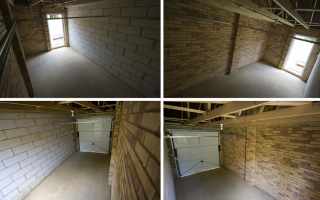Metal buildings are increasingly becoming a go-to for their versatility, durability, and efficiency in various applications from industrial to residential spaces. However, insulating these structures is not straightforward due to their unique construction and material properties. This comprehensive guide dives into the intricacies of insulating metal buildings, exploring the challenges, comparing insulation types, and revealing the step-by-step process for both new and existing structures.
Table of Contents
Understanding the Insulation Puzzle of Metal Buildings
Metal buildings stand out for their robustness and adaptability but pose distinctive challenges when it comes to insulation. The primary hurdles include thermal bridging, due to metal’s excellent heat conduction, and condensation issues, spurred by temperature variances. Insulation for these structures isn’t just about enhancing efficiency; it’s a crucial step for ensuring their long-term sustainability and performance.
The Challenges at a Glance:
Thermal Bridging: Metal frames can undermine insulation efforts by conducting heat, diminishing the insulation’s overall efficacy.
Condensation: The temperature differential between the interior and exterior can cause moisture buildup, risking corrosion and mold if not properly managed.
Selecting Insulation: A Critical Decision
When insulating your metal building, several factors need consideration to combat the unique challenges posed:
R-Value: A high R-value indicates better thermal resistance, a must for effective insulation.
Moisture Control: Opt for insulation that excels in moisture management to avoid condensation-related problems.
Fire Resistance: Safety first—choose materials that enhance the building’s fire resistance.
Installation & Fit: Ensure a snug fit with no gaps to maximize efficiency.
Durability: Pick materials that promise longevity and low maintenance, mirroring the metal structure’s inherent benefits.
Comparing Insulation Types for Metal Buildings
Let’s break down the options:
Fiberglass Insulation: Known for its fire resistance and soundproofing, it’s affordable but can be prone to moisture issues.
Spray Foam Insulation: Offers superior air sealing and thermal insulation but at a higher cost and requires professional installation.
Reflective Insulation: Ideal in hot climates for its ability to reflect radiant heat but less effective in colder regions.
Cellulose Insulation: An eco-friendly choice that provides good thermal performance but may absorb moisture and settle over time.
Each type has its pros and cons, making the choice dependent on your specific needs, climate, and budget.
Step-By-Step Insulation Process for Metal Buildings
Insulating a metal building, whether new or existing, requires meticulous planning and execution:
Assess: Start by examining the structure for any issues or special needs.
Choose Insulation: Select the type that best suits the building’s requirements.
Prepare the Surface: Clean and prep the metal surfaces.
Install a Vapor Barrier: Essential for moisture control.
Apply Insulation: Ensure a gap-free application for optimal performance.
Seal and Protect: Proper sealing is crucial for durability and effectiveness.
Retrofitting Metal Buildings
Insulating existing structures focuses on enhancing without major overhauls. Consider spray foam for roofs and add layers of fiberglass or reflective insulation to walls and ceilings, ensuring everything is properly sealed and a vapor barrier is in place.
Insulation That Stands Out
Smartech’s Quattro Insulation is a game-changer, combining the roles of insulation material, vapor barrier, and roof membrane into one innovative solution. Its unique composition and features like unmatched thermal performance, fire resistance, and ease of installation make it the premier choice for metal building insulation.
Key Advantages:
Multi-functional: Acts as insulation, vapor barrier, and roof membrane.
Fire Safety: Achieves top fire resistance classifications without releasing toxic gases.
Thermal Efficiency: Blocks solar heat effectively, reducing cooling costs.
Easy Installation: Adapts easily to different surfaces thanks to its flexible design.
Durability: Resists moisture absorption and remains effective over time.
Versatility: Suitable for various applications, enhancing the building’s comfort and efficiency.
Opting for Smartech’s Quattro Insulation means choosing a product that ensures year-round comfort and efficiency. For those looking to enhance their metal buildings, it offers an all-in-one solution that stands unmatched in the market.
In Conclusion
Insulating metal buildings is a complex task that demands a strategic approach. By understanding the unique challenges, comparing insulation types, and following a detailed process, you can significantly improve the performance and sustainability of your metal structure. Smartech’s Quattro Insulation emerges as the superior choice, offering unmatched benefits that align with the needs of metal buildings. Reach out to Smartech and discover how Quattro Insulation can transform your space.










